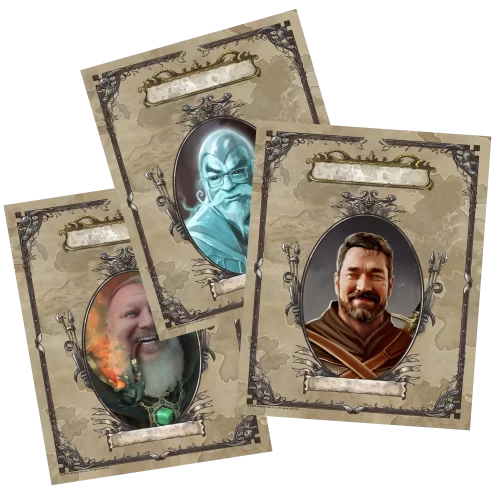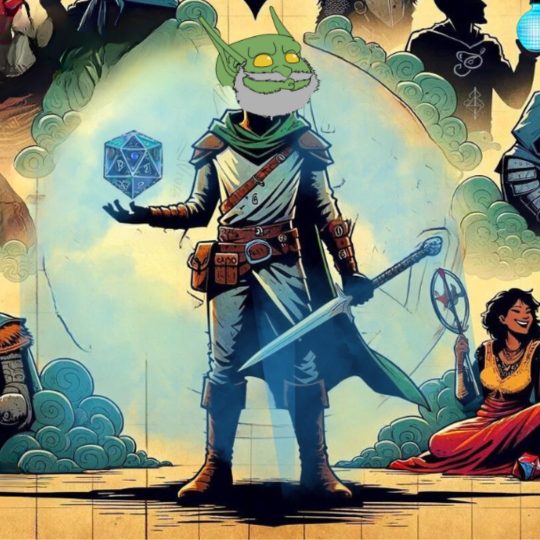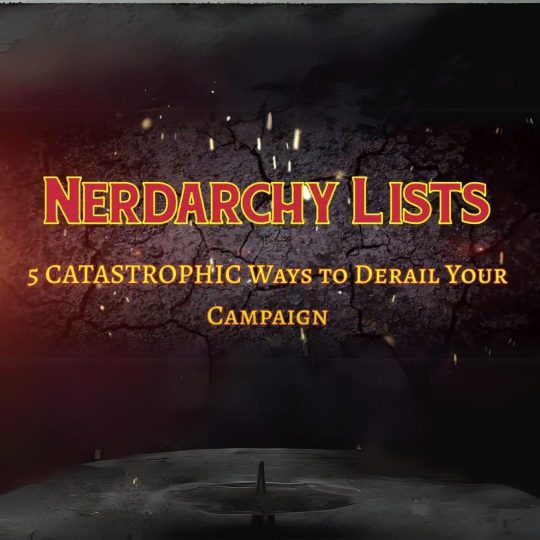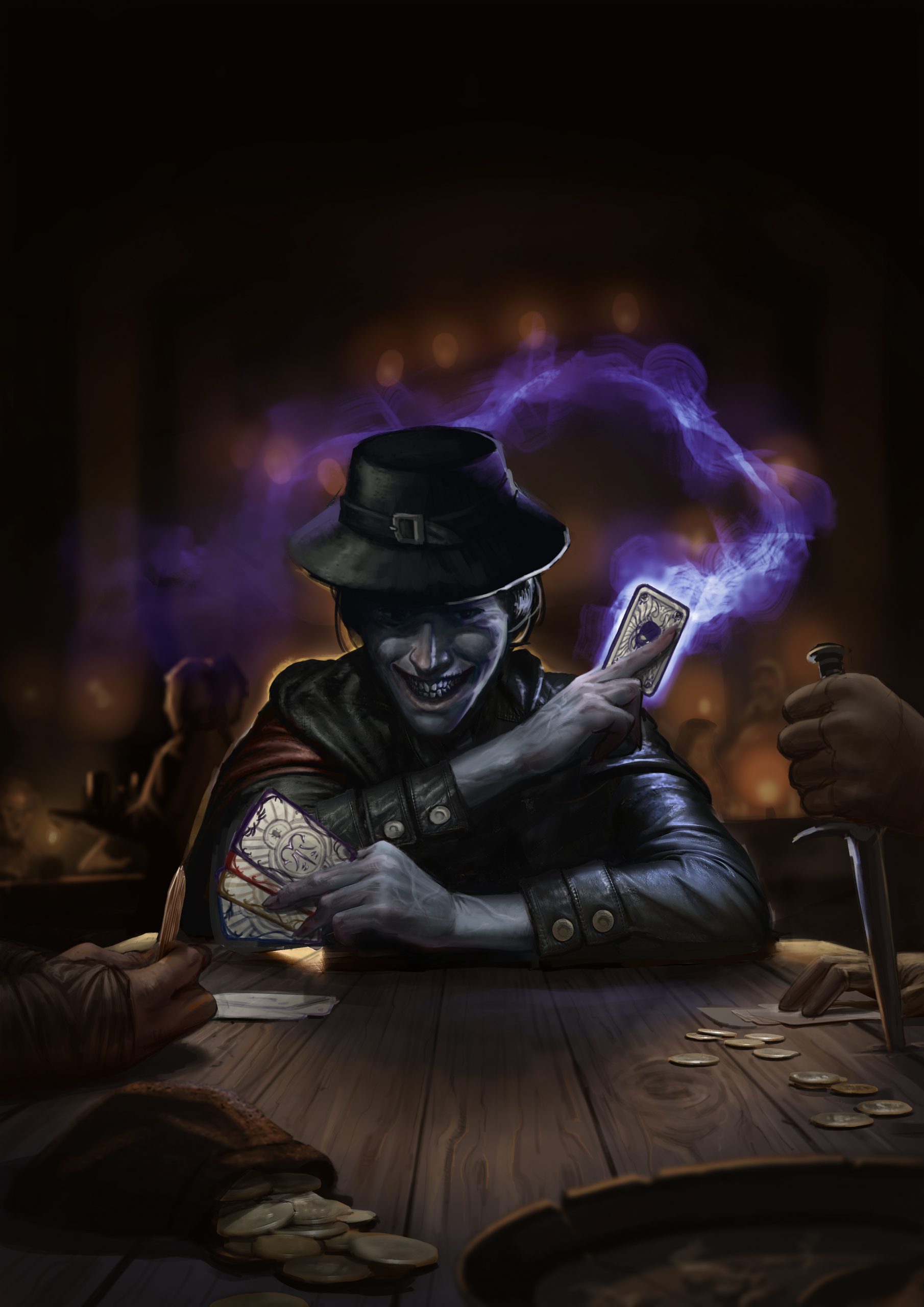
“Gang of One” – Out of the Box D&D Encounters #45
 How many times have you, as Dungeon Master, heard this phrase: “Wait, a (insert monster)? In (insert environment)? Don’t they normally occur in (insert different environment)?” How many times has THAT been a headache? Well, this Out of The Box addresses that sort of dilemma. True, many random encounter generators, whether digital or printed, separate the reasonably possible creatures into the environs they should be expected in. However, the DM may wish to use a creature because they may never have tried a new one, or find the list of possible encounters uninspiring.
How many times have you, as Dungeon Master, heard this phrase: “Wait, a (insert monster)? In (insert environment)? Don’t they normally occur in (insert different environment)?” How many times has THAT been a headache? Well, this Out of The Box addresses that sort of dilemma. True, many random encounter generators, whether digital or printed, separate the reasonably possible creatures into the environs they should be expected in. However, the DM may wish to use a creature because they may never have tried a new one, or find the list of possible encounters uninspiring.
The simple solution is to re-skin a creature in such a way as to MAKE it plausible. If real world species have variants that occur in strikingly different climates, then why not fantasy creatures? If foxes could have species variants ranging from the arctic to dry deserts, and we already know that D&D dragons have VERY specific sub-species for different environs, then applying that same logic to other monsters might be not only possible, but opens up an entirely new toolbox for a DM to use.
Building on both of those concepts, I intend to use the Chimera as the basis, but will be placing it in an environment that it is not native to. Then, we’ll either swap or re-skin the heads so that it is actually thematic with the terrain as well as believable. Taking lessens from our own world, the Chimera’s “lion” head will now be a Siberian Tiger, and the Ram will be that if a Mountain Goat. The dragon’s head is the easiest to change. We simply change the Red Dragon head to a White Dragon head, and therefore change the breath damage from Fire to Cold, and the saving throw from Dexterity-based to Constitution.
Now we have an arctic-based version of a Chimera. Using the same logic, one could create a monster for different climates, including such extremes as aquatic or elemental, depending on how much work the DM may wish to put into monster creation or alteration.
 All that remains now is to create a motivation for any monster. Chimera are typically proud, greedy and stubborn. They are also not that intellectually gifted … to say the least. This can be quite limiting in the context of usage. Experienced players may know of the Chimera’s intellectual limitations, and coupled with action economy, turn a typical Chimera encounter into a quick exchange of blows to resolve it. The easiest way out for DM to make this less predictable is to increase the monster’s Intelligence score. While this could be explained as an atypical mutation, such explanations have always earned at least one set of rolled eyes in my experience. Magic, then, becomes the next easiest answer. This tactic was used in “The Argument – Out of the Box D&D Encounters #14,” whereby a magic item from a previous edition (Helm of Alignment Change) was applied to one of the two heads of an Ettin to alter behavior. Whereas that created a possible role playing opportunity with the injection of some humor, in the case of the Chimera we seek to make the monster less of a standard encounter and perhaps more of a villain. Playing on the dragon head’s greed, it’s entirely plausible a magic item like a Headband of Intellect might fall into the “claws” of a Chimera and be taken by the greedy dragon head. This would alter the monster’s outlook in a wholesale manner and would make one head far superior in its ability to direct the actions and schemes of a creature normally subject to infighting. This is in keeping with the trend of turning two-dimensional monsters into something more.
All that remains now is to create a motivation for any monster. Chimera are typically proud, greedy and stubborn. They are also not that intellectually gifted … to say the least. This can be quite limiting in the context of usage. Experienced players may know of the Chimera’s intellectual limitations, and coupled with action economy, turn a typical Chimera encounter into a quick exchange of blows to resolve it. The easiest way out for DM to make this less predictable is to increase the monster’s Intelligence score. While this could be explained as an atypical mutation, such explanations have always earned at least one set of rolled eyes in my experience. Magic, then, becomes the next easiest answer. This tactic was used in “The Argument – Out of the Box D&D Encounters #14,” whereby a magic item from a previous edition (Helm of Alignment Change) was applied to one of the two heads of an Ettin to alter behavior. Whereas that created a possible role playing opportunity with the injection of some humor, in the case of the Chimera we seek to make the monster less of a standard encounter and perhaps more of a villain. Playing on the dragon head’s greed, it’s entirely plausible a magic item like a Headband of Intellect might fall into the “claws” of a Chimera and be taken by the greedy dragon head. This would alter the monster’s outlook in a wholesale manner and would make one head far superior in its ability to direct the actions and schemes of a creature normally subject to infighting. This is in keeping with the trend of turning two-dimensional monsters into something more.
Environment: Arctic
Suggested level: 6
Description: The party trudges through snow and cold on their way to a distant destination. The wind bites where gaps in clothing occur, and snow has begun to fall, making anything at a distance difficult to see. The air is cold and crisp, smelling of ice crystals. The path winds through small hillocks and snow banks, channeling the wind like a snake.
Now, “Dregedag” will try to ambush the party. Given the snowfall, Wisdom(Perception) checks to spot the ambush are at Disadvantage. Dregedag is well camouflaged in this environment and is hidden in a soft snow bank. That makes any Passive Perception check to spot him outright very difficult (DC: 20), and a similar chance to notice anything unusual when actively using Perception.
Bursting from one of these snow banks is a massive white creature. With a roar, it exhales the essence of the weather upon the group, chilling the first two ranks to the bone. Dregedag will breath a 15’ cone upon the first ranks and then take flight into the sky, gaining 60’ of altitude for at least two rounds. He’ll hope to use his natural coloring along with the snowfall to hide his progress. The Chimera has stashed away several icy boulders in multiple locations that he uses to bomb travelers with. He will return five turns later with an ice boulder he’s stashed behind another snow bank. He’ll try to drop this among the largest group to create havoc and panic, flying by at full speed at a height of 60’ to drop this ice boulder among the party. This will require his (random) target(s) to make Dexterity saving throws (DC: 15) or take 2d8 Bludgeoning damage. He’ll perform three such passes before descending upon one character. Because he’s now far more intelligent, he’ll choose a target that is either outlying, injured, or poorly armored.
Dregedag will then use his breath weapon again. Follow the standard Chimera battle tactics after this, with one exception: Should Dregedag drop to one-third of his hit points (38hp), he will attempt to flee. The Chimera is very proud and will not want to have his territory endangered with a show of weakness. Once he recovers, he’ll be back again. The Chimera understands the territory and knows the dangers of the cold – he might wait for a moment of weakness or perhaps the cover of darkness. For hints on how to play him, remember that he still bears the flaws of a Chimera. He may have a much increased intelligence, but he still bears pride, greed, and stubbornness. That may lead to hubris. That’s something smart players can exploit.
Monsters: “Dregedag”- Chimera – As per Monster Manual, page 39, with the following changes: Dragon head changes to White from Red, changing the breath weapon from Fire to Cold (Constitution DC:15), re-skin the lion to a white tiger, and the ram to a mountain goat. Their attack and damage statistics remain unchanged. Dregedag is white in color, blending into the arctic terrain. He also wears a Headband of Intellect on the Dragon head, so his Intelligence has increased to 19.
 Treasure: Headband of Intellect, as per DMG page 173.
Treasure: Headband of Intellect, as per DMG page 173.
Complications: Softer targets are the preferred prey for this Chimera, so they might be more at risk in this encounter. Tension and surprise are key in this encounter, as is a willingness to capitalize on both the strengths and weaknesses of the monster in question. This combat demonstrates certain actions that I have stated previously should be possible by intelligent flying creatures whom are also strong enough to take advantage of it. DMs should expect more than one character to raise an eyebrow when creatures act outside of how the Monster Manual might show them. Remember, these entries are “the average or typical” monster for that entry, and not unusual examples like Dregedag. Hopefully, such re-skinning and re-tooling will add flavor and keep experienced players on their toes, while adding new wonder and variety for newer players. Good luck!
Related articles
[amazon_link asins=’0786965614,B005MUB76E,B005MUAT6S’ template=’ProductCarousel’ store=’nerdarchy-20′ marketplace=’US’ link_id=’7997ca7f-0cee-11e7-b863-c915b173f1d0′]













1 Comment